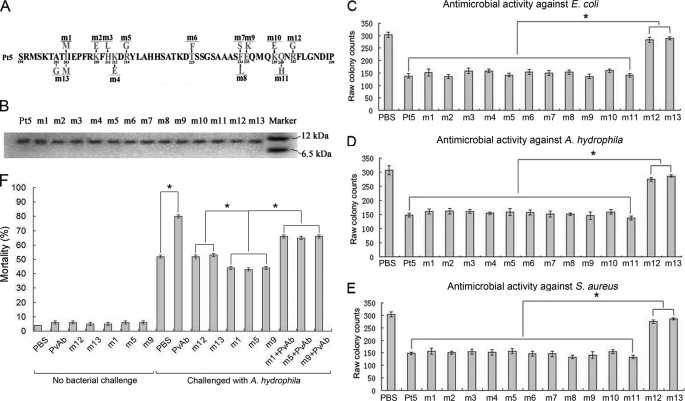FIGURE 7.
Antimicrobial activity of Pt5 mutants. A, diagram showing the site-directed mutagenesis. B, SDS-PAGE of the mutants, showing that they all have a similar molecular mass. C, antimicrobial activity against E. coli. D, antimicrobial activity against A. hydrophila. E, antimicrobial activity against S. aureus. BSA was used as control. F, effects of microinjected m1, m5, m9, m12, or m13 as well as anti-fish Pv antibody on the antimicrobial activity of the embryos. The early (8-cell stage) embryos were first microinjected and then challenged by injection of live A. hydrophila 1 h later. The mortality was recorded, and the cumulative mortality was calculated at 24 h following the bacterial injection. About 95% of the nonbacterial challenge control embryos developed normally. The challenge with live A. hydrophila resulted in a significant increase in the mortality of the embryos microinjected with anti-Pv antibody but not the embryos injected with PBS. Microinjection of m1, m5, or m9 into the embryos was able to increase their resistance to A. hydrophila, whereas the injection of m12 or m13 into the embryos was not. Co-injection of anti-Pv antibody with m1, m5, or m9 was able to counteract their activity to enhance the embryonic resistance to A. hydrophila. Data were expressed as mean values ± S.E. (n = 3). The bars represent the mean ± S.E. The asterisk means a significant difference (p < 0.05). PvAb, anti-fish Pv antibody; AcAb, anti-actin antibody.

